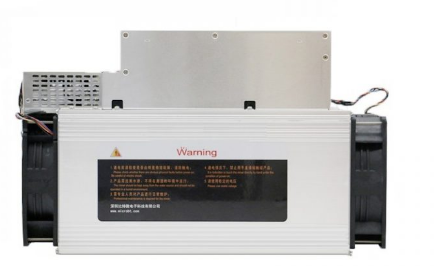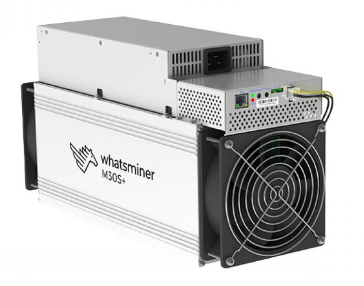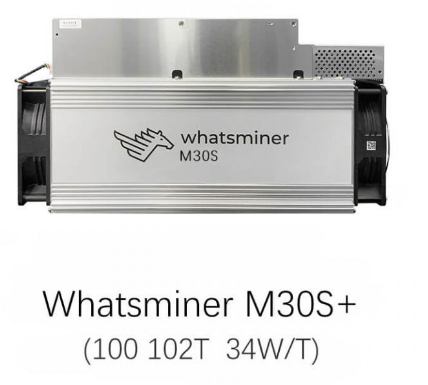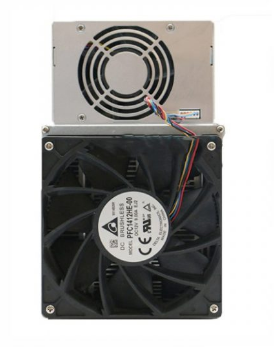How to integrate WhatsMiner M30S+ into an existing mining farm?
How to Integrate WhatsMiner M30S+ into an Existing Mining Farm
Introduction
The WhatsMiner M30S+ represents a significant leap forward in Bitcoin mining technology, offering a compelling combination of high hash rates, energy efficiency, and operational reliability. For mining farm operators looking to expand or upgrade their existing infrastructure, integrating the M30S+ can enhance profitability while maintaining operational stability.
This guide explores the key considerations for seamlessly incorporating the WhatsMiner M30S+ into an established mining farm, covering power requirements, cooling solutions, network integration, and maintenance strategies.
1. Assessing Power Requirements for Seamless Integration
Understanding Power Consumption
The WhatsMiner M30S+ operates at 3400W (±10%), making it crucial to evaluate your farm’s power capacity before deployment.

- Power Supply Compatibility: The M30S+ requires a 12V power supply, which is standard in most mining farms. However, operators should verify that their PSUs can handle the load without overloading circuits.
- Electrical Infrastructure:
- Single-phase vs. Three-phase power: Large-scale farms should ensure their electrical panels support the additional load.
- Circuit Breakers & Wiring: Each M30S+ draws ~14-15A at 240V, so dedicated 20A circuits are recommended to prevent tripping.
Optimizing Power Efficiency
- Power Distribution Units (PDUs): High-efficiency PDUs help balance loads across circuits.
- Dynamic Power Adjustments: Some farms use power management software to optimize electricity usage during peak tariff periods.
2. Cooling and Ventilation Strategies
Thermal Management Considerations
The M30S+ features a dual-fan cooling system, but proper airflow is essential for sustained performance.
- Ambient Temperature Control:
- The miner operates optimally between -5°C and 40°C, so farms in hot climates may need additional cooling.
- Exhaust Systems: Industrial exhaust fans or ducting can help expel hot air efficiently.
- Airflow Optimization:
- Hot Aisle/Cold Aisle Layout: Separating intake and exhaust paths prevents heat recirculation.
- Spacing Between Units: At least 30-50cm between miners ensures adequate ventilation.
Alternative Cooling Solutions
- Immersion Cooling: Some high-density farms use dielectric fluid cooling for better thermal efficiency.
- Evaporative Cooling: In dry climates, swamp coolers can reduce temperatures cost-effectively.
3. Network and Software Integration
Connecting to the Mining Pool
The M30S+ uses Ethernet connectivity, making integration straightforward:

- Assign Static IPs or Use DHCP: Large farms benefit from static IP assignments for easier monitoring.
- Pool Configuration:
- Input your mining pool’s stratum address (e.g.,
stratum+tcp://btc.pool.example:3333). - Set up failover pools to minimize downtime.
Monitoring and Management Tools
- WhatsMiner Dashboard: The built-in interface allows real-time tracking of hash rate, temperature, and power usage.
- Third-Party Software:
- Hive OS, Awesome Miner, or Minerstat provide fleet-wide management.
- Telegram/Discord Alerts: Configure notifications for hardware failures or performance drops.
4. Maintenance and Long-Term Reliability
Preventive Maintenance Practices
The M30S+ is built for durability, but proactive care extends its lifespan:

- Regular Cleaning: Dust buildup can obstruct airflow—clean fans and vents monthly.
- Component Inspections:
- Check fan integrity (replace if noise or RPM drops).
- Monitor hash board health via the dashboard.
Handling Repairs and Warranty
- 180-Day Warranty: Covers manufacturing defects—register devices promptly.
- Modular Repairs: Hash boards and PSUs can be replaced individually, reducing downtime.
- Authorized Service Providers: Companies like Minerfixes supply genuine replacement parts.
5. Economic and Operational Advantages of the M30S+
Profitability Analysis
- 100 TH/s Hash Rate: Competes favorably against older-gen miners like the Antminer S19.
- Power Efficiency: At 34W/TH, it offers a strong balance between performance and electricity costs.
Scalability in Mining Farms
- Space-Efficient Design: Its compact size (425mm x 155mm x 225mm) allows high-density deployments.
- Global Logistics Support: DHL/UPS shipping ensures quick delivery for farm expansions.
Conclusion: Optimizing Your Farm with the M30S+
Integrating the WhatsMiner M30S+ into an existing mining farm requires careful planning around power, cooling, and network infrastructure. However, its high hash rate, energy efficiency, and robust design make it a valuable addition for operators aiming to maximize Bitcoin mining ROI.
By following best practices in power management, thermal regulation, and preventive maintenance, mining farms can leverage the M30S+ to stay competitive in an evolving industry. Whether upgrading legacy equipment or expanding operations, this ASIC miner delivers the performance and reliability needed for long-term success.

For farms considering bulk deployments, WhatsMiner’s global logistics and warranty support further streamline the integration process, ensuring minimal downtime and maximum uptime.
Final Tip: Before full-scale deployment, test a single M30S+ unit in your farm’s environment to fine-tune cooling and power settings for optimal performance.
Would you like a deeper dive into any specific aspect of integrating the M30S+? Let us know in the comments!